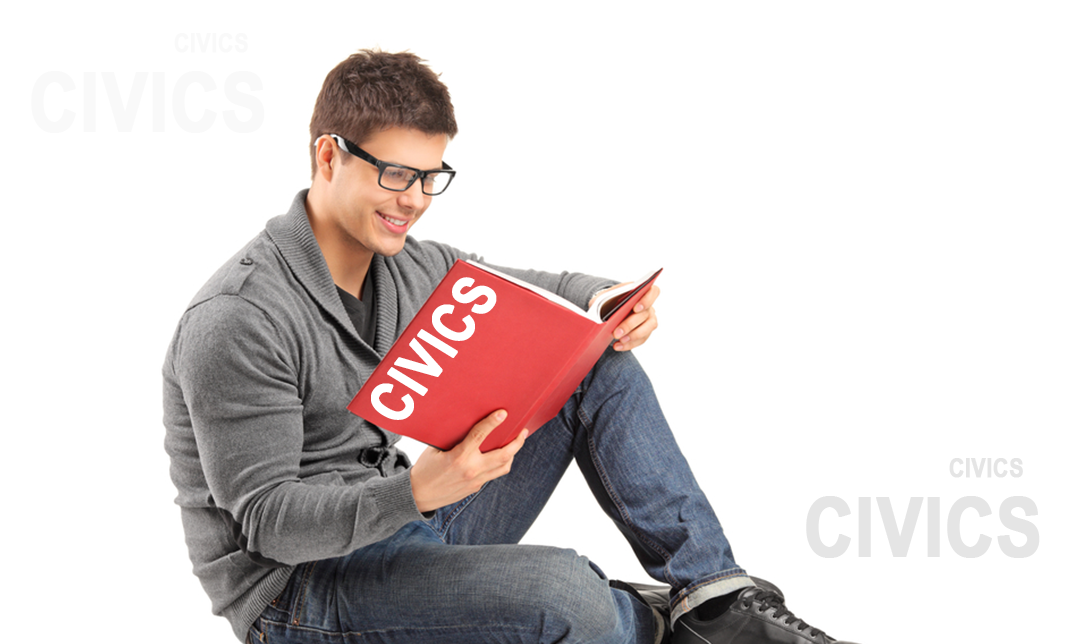Course Description
This course explores rights and responsibilities associated with being an active citizen in a democratic society. Students will explore issues of civic importance such as healthy schools, community planning, environmental responsibility, and the influence of social media, while developing their understanding of the role of civic engagement and of political processes in the local, national, and/or global community. Students will apply the concepts of political thinking and the political inquiry process to investigate, and express informed opinions about, a range of political issues and developments that are both of significance in today’s world and of personal interest to them.
Prerequisite: none
Credit Value: 0.5
Required Text: None
| Unit Titles and Descriptions | Time Allocated |
| Unit 1: Open your Eyes | 15 hours |
| Unit 2: Stand Up | 15 hours |
| Unit 3: Step Forward | 15 hours |
| Unit 4: Culminating Activity | 10 hours |
| Total | 55 hours |
Resources required by the student:
Note: This course is entirely online and does not require or rely on any textbook.
Policies
Assignment Submission
All assignments are expected to be submitted by the deadline noted in the calendar and/or announcement area of the course. Students must submit the assignments online as directed. All assignments will be placed into the appropriate dropbox. Alternate submission methods must be approved by the teacher. If you have a problem with a date – talk to the teacher before the date has passed.
Plagiarism and/or Cheating
- Plagiarism of print or Internet material on assessment/evaluation tasks is illegal and therefore, forbidden.
- Cheating on tests/examinations or submitting assessment tasks copied from another student is forbidden.
- Administration and parent/guardians will be notified of student plagiarism/cheating and the incident will be recorded.
- The use of computerized translator software is forbidden for foreign languages.
- Inappropriate use of web Site services, testing, weekly quizzes, teacher-student communication, discussion boards, and chat rooms are all forbidden.
Participating in online courses is a privilege. You are expected to behave in an appropriate manner while logged into your online course(s). Any inappropriate use of language, use of the site facilities for purposes other than course related activities or malicious actions taken against others through these facilities are not permitted. These violations will be dealt with and may result in suspension or expulsion from online learning. Please remember, your actions within the site can and will be monitored. Any communications on the Internet, whether through email, private chat room, or other methods are not private. Be aware that anything you communicate may be viewed by others. If you don’t want it known, do not type it into your computer.
Grading Policies
Students will be provided with numerous and varied opportunities to demonstrate the full extent of their achievement of the curriculum expectations, across all four categories of knowledge and skills. Progress will be monitored on an ongoing basis using a variety of assessment tools, including written work, formal testing, weekly quizzes, teacher-student communication, discussion boards and chat rooms.
Achievement Chart
| Categories | Level 1 (50 – 59%) | Level 2 (60 – 69%) | Level 3 (70 – 79%) | Level 4 (80 – 100%) |
| Knowledge and Understanding | Specific content acquired in each grade (knowledge), and the comprehension of its meaning and significance (understanding) | |||
| Knowledge of content (e.g., facts, terms, definitions, safe practices and procedures, use of technologies) |
|
|
|
|
| Understanding of content (e.g., concepts, theories, ideas, processes; relationship between theory and action) |
|
|
|
|
| Thinking | The use of critical and creative thinking skills and/or processes | |||
| Use of planning skills (e.g., formulating questions, identifying problems, gen – erating ideas, gathering and organizing information, focusing research, selecting strategies) |
|
|
|
|
| Use of processing skills (e.g., analysing, detecting point of view and bias, interpreting, evaluating, synthesizing, forming conclusions) |
|
|
|
|
| Use of critical/creative thinking processes (e.g., goal setting, decision making, problem solving, invention, critiquing, reviewing) |
|
|
|
|
| Communication | The conveying of meaning through various forms | |||
| Organization and expression of ideas, information, and understandings in oral, visual, and/or written forms (e.g., oral: role plays, interviews, presentations, debates; visual: demonstrations, multimedia presentations, posters, graphic organizers; written: pamphlets, journals, reports, web pages) |
|
|
|
|
| Communication for different audiences (e.g., peers, adults, younger children, community members) and purposes (e.g., to inform, instruct, persuade) in oral, visual, and/or written forms |
|
|
|
|
| Use of conventions (e.g., research conventions such as surveys, documentation conventions, communication conventions), vocabulary, and terminology of the discipline in oral, visual, and/or written forms |
|
|
|
|
| Application | The use of knowledge and skills to make connections within and between various contexts | |||
| Application of knowledge and skills (e.g., concepts, processes, use of equipment and technology) in familiar contexts |
|
|
|
|
| Transfer of knowledge and skills(e.g., concepts, processes, use of tools and software) to new contexts |
|
|
|
|
| Making connections within and between various contexts (e.g., multidisciplinary connections, social impact of technology , connections between school and future opportunities) |
|
|
|
|
Teaching & Learning Strategies:
The Canadian and world studies courses will prepare students for a life of responsible citizenship in which they think critically about events, developments and issues in their daily lives. In the politics courses, the goal is to help students develop a sense of responsibility. At their own pace, students will work towards:
- developing an understanding of how to influence change within the diverse communities to which they belong, and of how individuals and groups can participate in action that promotes change;
- analysing current political issues, and assessing methods and processes that can be used to influence relevant political systems to act for the common good;
- assessing the power and influence of different people involved in civic issues, using political perspective;
- developing a respect and appreciation for different points of view on various political issues.
Assessment, Evaluation and Reporting Strategies of Student Performance:
Our theory of assessment and evaluation follows the Ministry of Education’s Growing Success document, and it is our firm belief that doing so is in the best interests of students. We seek to design assessment in such a way as to make it possible to gather and show evidence of learning in a variety of ways to gradually release responsibility to the students, and to give multiple and varied opportunities to reflect on learning and receive detailed feedback.
Growing Success articulates the vision the Ministry has for the purpose and structure of assessment and evaluation techniques. There are seven fundamental principles that ensure best practices and procedures of assessment and evaluation by ICE teachers. ICE assessments and evaluations,
- are fair, transparent, and equitable for all students;
- support all students, including those with special education needs, those who are learning the language of instruction (English or French), and those who are First Nation, Métis, or Inuit;
- are carefully planned to relate to the curriculum expectations and learning goals and, as much as possible, to the interests, learning styles and preferences, needs, and experiences of all students;
- are communicated clearly to students and parents at the beginning of the course and at other points throughout the school year or course;
- are ongoing, varied in nature, and administered over a period of time to provide multiple opportunities for students to demonstrate the full range of their learning;
- provide ongoing descriptive feedback that is clear, specific, meaningful, and timely to support improved learning and achievement;
- develop students’ self-assessment skills to enable them to assess their own learning, set specific goals, and plan next steps for their learning.
The Final Grade:
The evaluation for this course is based on the student’s achievement of curriculum expectations and the demonstrated skills required for effective learning. The final percentage grade represents the quality of the student’s overall achievement of the expectations for the course and reflects the corresponding level of achievement as described in the achievement chart for the discipline. A credit is granted and recorded for this course if the student’s grade is 50% or higher. The final grade will be determined as follows:
- 70% of the grade will be based upon evaluations conducted throughout the course. This portion of the grade will reflect the student’s most consistent level of achievement throughout the course, although special consideration will be given to more recent evidence of achievement.
- 30% of the grade will be based on final evaluations administered at the end of the course. The final assessment may be a final exam, a final project, or a combination of both an exam and a project.
The Report Card:
Student achievement will be communicated formally to students via an official report card. Report cards are issued at the midterm point in the course, as well as upon completion of the course. Each report card will focus on two distinct, but related aspects of student achievement. First, the achievement of curriculum expectations is reported as a percentage grade. Additionally, the course median is reported as a percentage. The teacher will also provide written comments concerning the student’s strengths, areas for improvement, and next steps. Second, the learning skills are reported as a letter grade, representing one of four levels of accomplishment. The report card also indicates whether an OSSD credit has been earned. Upon completion of a course, ICE will send a copy of the report card back to the student’s home school (if in Ontario) where the course will be added to the ongoing list of courses on the student’s Ontario Student Transcript. The report card will also be sent to the student’s home address.
Program Planning Considerations:
Teachers who are planning a program in this subject will make an effort to take into account considerations for program planning that align with the Ontario Ministry of Education policy and initiatives in a number of important areas.




